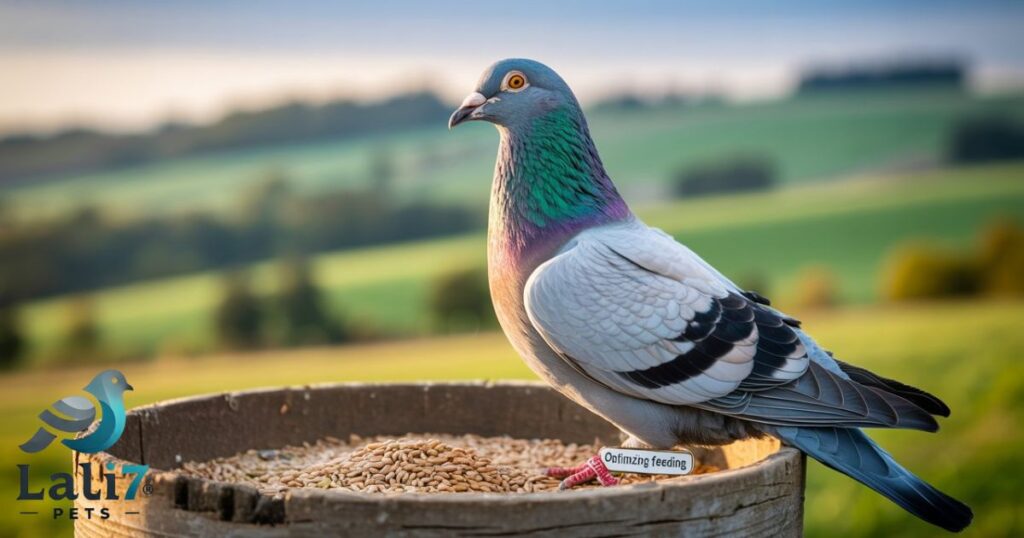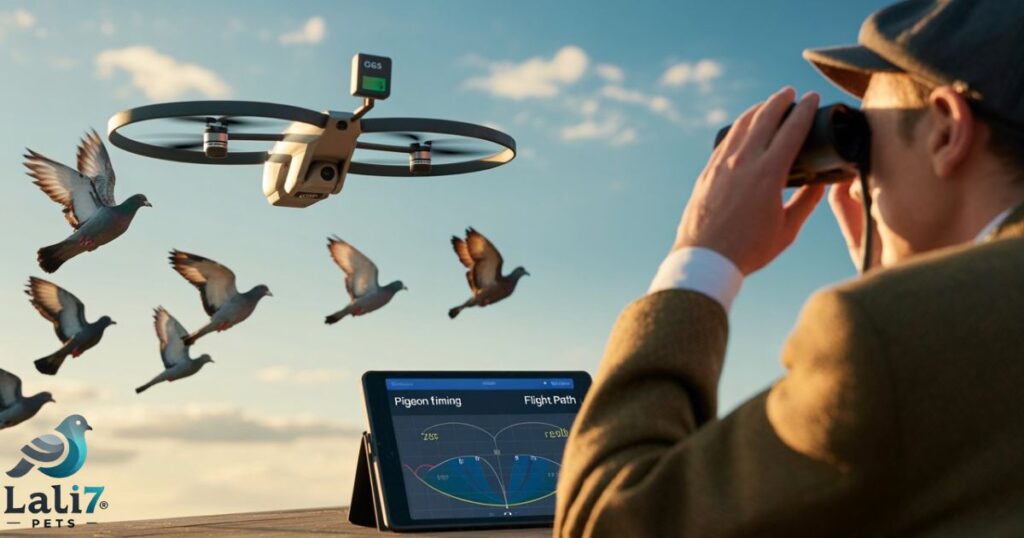In the world of pigeon racing, Pigeon Timing Flights Effectively is more than just a strategy, it’s an art form. Whether you’re a seasoned fancier or just starting, mastering the timing of your pigeons’ flights can significantly impact their performance and your success in races.
This comprehensive guide will walk you through the essentials of timing your pigeons’ flights effectively, ensuring they’re in peak condition when it matters most.
Why Pigeon Timing Flights Effectively Matter
Proper timing is crucial in pigeon racing. It’s not simply about releasing your birds at the right time; it’s a blend of training, feeding, conditioning, and monitoring to get optimal performance from your racers. Without proper timing, even the best birds can underperform.
A close friend of mine, an experienced fancier, once missed a major win simply because his timing was off by a few minutes. He later said, “I had the best bird that day, but poor preparation made the difference.” That experience changed how we approached timing forever.
Pigeon Timing Flights Effectively Today: Building a Solid Training Routine
Step 1: Start With Loft Flying
Let your pigeons fly freely around the loft each morning. This helps them build muscle and confidence. Ideally, they should fly for 45 minutes to 1 hour.
Loft flying helps young birds orient themselves and develop homing instincts. It’s essential to do this consistently at the same time every day.
Step 2: Road Training
Once your pigeons are flying confidently around the loft, start road training. Begin at short distances (3-5 km), then gradually increase to 80-100 km before the race season.
Use the same time of day and weather conditions where possible to help pigeons develop internal race timing.
Step 3: Use Training Tosses Wisely
Throw in surprise tosses or varied distances to keep your pigeons alert. Avoid patterns they can predict. Variation prevents complacency.
Optimizing Feeding for Pigeon Timing Flights Effectively

Timing isn’t just about flying, it’s about feeding too.
Pre-Training Feeding
Feed your birds about 90 minutes before training flights. Use light grains like barley or safflower that provide energy without making them sluggish.
Post-Training Feeding
After training, switch to protein-rich mixtures (peas, beans) to aid recovery. Always ensure clean, cool water is available.
Technology and Tools: Enhancing Pigeon Timing Flights Effectively

Modern tech can give you a competitive edge.
Electronic Timing Systems (ETS)
Install electronic timing systems, such as Benzing or Tauris. These automatically record a pigeon’s time of return during races or training. They eliminate human error and make tracking much easier.
GPS Trackers
Use GPS devices to analyze flight paths, rest breaks, and wind resistance. You’ll get data you can use to adjust flight routes and optimize future training.
Pigeon Timing Flights Effectively: Loft Management and Health Checks
A well-timed pigeon is also a healthy pigeon. Maintain a clean, stress-free loft and check for illnesses regularly.
- Use grits, minerals, and probiotics
- Minimize loft overcrowding
- Keep consistent light and temperature conditions
Pigeon loft hygiene is a non-negotiable factor in performance.
Using Weather to Your Advantage
Check wind direction and humidity levels before releasing your birds. East or south winds may slow them down. Cloudy days are usually better than hot, sunny days.
Release at the same time every day, adjusting for weather changes, to train them under varied but realistic conditions.
Race Day Strategy: How to Time Your Pigeons Right
Race day isn’t the time to experiment. Stick to your training blueprint.
- One day before: Feed earlier in the day and reduce portions
- Night before: Provide clean water with electrolytes
- Morning of release: Keep birds calm and quiet
Pigeon Timing Flights Effectively: Weekly Monitoring and Adjustments
At the end of each week:
- Record training distances and return times
- Log weather conditions
- Track feeding schedules and health status
Use spreadsheets or apps like WinCompanion or Pigeon Planner to monitor progress.
This helps you spot patterns and make smart decisions.
Frequently Asked Questions (FAQ)
What is the best time to fly pigeons?
The best time to fly pigeons is early morning, shortly after sunrise, when the air is cool and calm for optimal orientation and stamina.
How to increase pigeon flying time?
You can gradually increase pigeon flying time through daily loft training, proper nutrition, and consistent motivation techniques.
How to make pigeons fly more?
Encourage pigeons to fly more by releasing them in small groups, using flagging methods, and avoiding overfeeding before flights.
How long can a pigeon fly nonstop?
A healthy racing pigeon can fly nonstop for 10 to 12 hours, covering up to 600 miles depending on wind and weather conditions.
Common Mistakes That Disrupt Pigeon Timing Flights Effectively
- Changing flight times too often
- Overfeeding before flights
- Ignoring minor injuries or signs of fatigue
- Training in poor weather
Avoiding these will help your pigeons stay consistent and confident.
Conclusion: Fly With Precision
Pigeon Timing Flights Effectively is a system that combines planning, observation, and care. Stick to your routine, track everything, and always prioritize your birds’ health.
Once you master timing, races become not only competitive but predictable.

